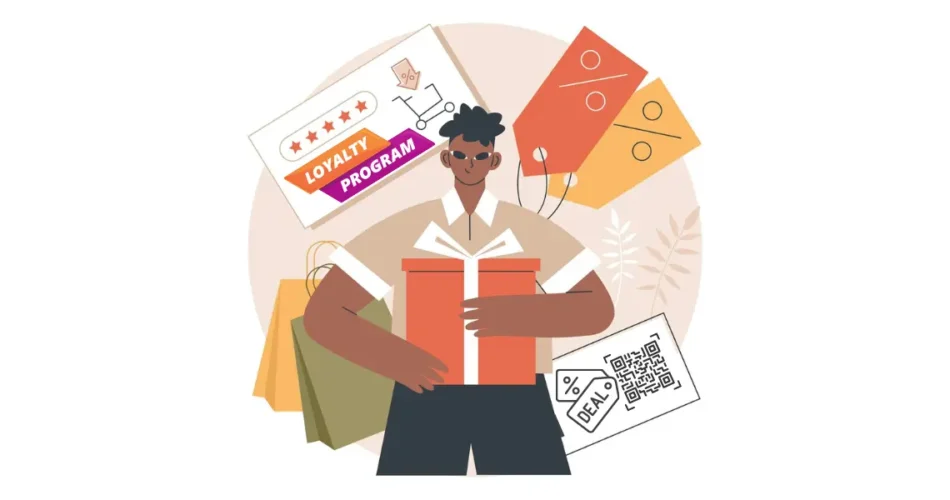If you’re curious about loyalty programs, you probably remember those bulky wallets overflowing with store punch cards.
Those were the early days of loyalty programs, where we, the customers, painstakingly collected paper tokens for eventual rewards.
While these programs aimed to encourage repeat business, they were limited by manual tracking and a lack of personalization. Thankfully, loyalty programs have undergone a digital revolution.
Today, mobile apps reign supreme, offering convenient access, real-time point tracking, and the ability to tailor rewards to individual customer preferences.
These advancements foster deeper customer engagement and a more rewarding experience.
These advancements have taken a new turn in the past few years. QR Codes, those mystic black and white squares, have become a game-changer for loyalty programs.
Their simplicity is key–anyone with a smartphone can scan them using their built-in camera, eliminating the need for additional app downloads.
But QR Codes do more than just bridge the physical and digital worlds. They offer a contactless way to interact with loyalty programs, a feature that resonates in today’s world.
A quick scan can unlock rewards, track points, or reveal special offers, all without the need for physical cards or manual entry.
This streamlined approach keeps things moving and fosters a more positive customer experience.
Let’s understand what it means and how you can create loyalty program QR Codes.
Let’s begin!
A. What is a loyalty program QR Code?
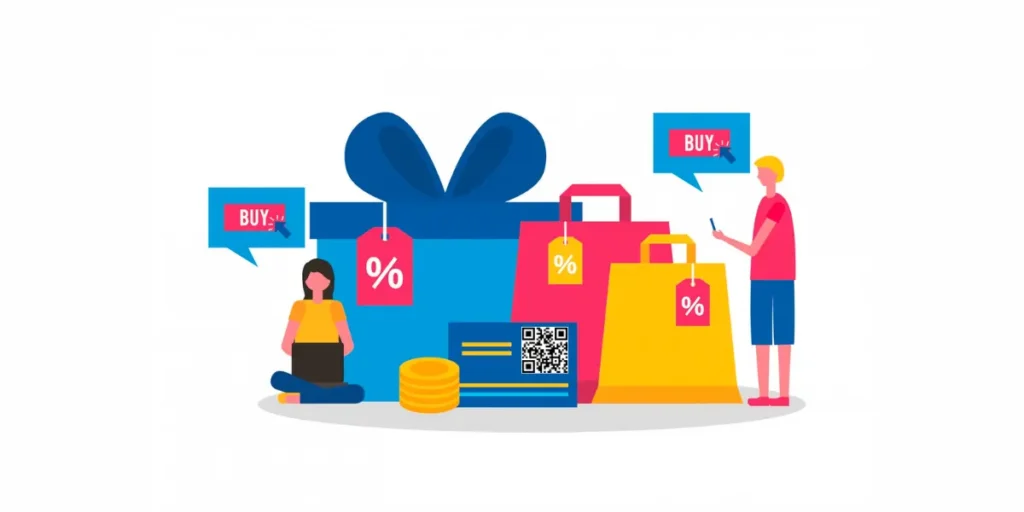
A loyalty program QR Code uses QR Code technology to incentivize and track customer behavior. It goes beyond the traditional point-collection model.
By scanning strategically placed QR Codes, customers can unlock a variety of benefits, including:
- Exclusive Discounts: Get a special reward for your next purchase.
- Members-Only Content: Access hidden menus, early product launches, or special events.
- Personalized Promotions: Receive targeted offers based on your past purchases and preferences.
This flexibility allows businesses to design loyalty programs that resonate with their customers and drive deeper engagement.
B. Understand the mechanics: How QR Code loyalty programs work
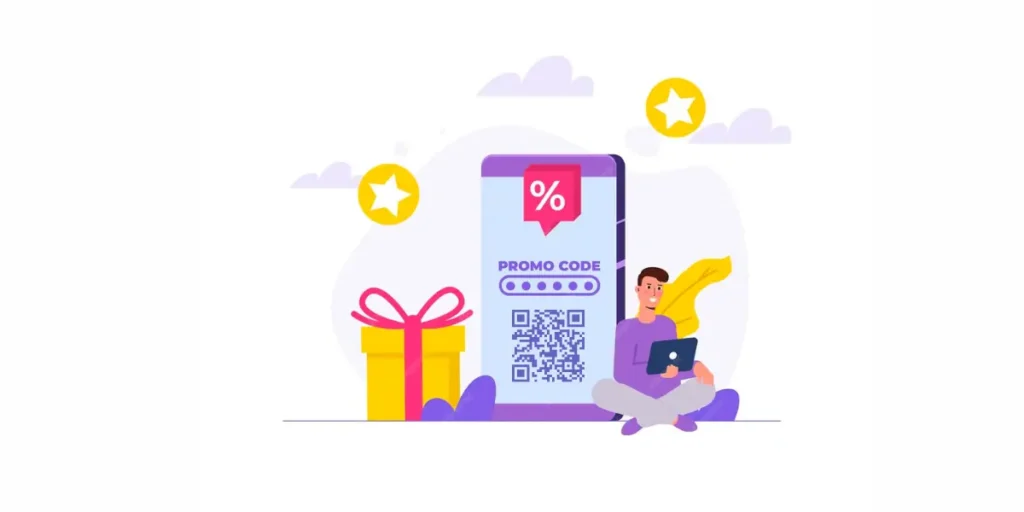
Here’s a breakdown of the simple steps involved in a QR Code loyalty program:
- Create Loyalty Program QR Codes: Create Loyalty program QR Codes using an online QR Code generator tool.
- Place QR Codes: Strategically place these QR Codes in stores or marketing materials.
- Scan the Code: Look for strategically placed QR Codes in stores, on receipts, marketing materials, or even product packaging.
- Link to the Program Platform: Scanning the code directs you to a designated platform, either a mobile app or a web page.
- Register or Log In: New customers can create an account while existing members can simply log in with their credentials.
- Unlock Rewards or Track Progress: Each scan can trigger specific actions. You might earn points for purchases, track event attendance, or discover special offers based on the scanned code’s location or type.
C. Benefits of loyalty program QR Codes

1. For businesses
Loyalty program QR Codes offer a win-win situation for businesses and customers alike. Here’s how businesses can use QR Code technology:
1. Enhanced Customer Engagement: QR Codes create interactive touchpoints throughout the customer journey.
Engaging customers through scans can lead to increased brand recall, repeat visits, and overall program participation.
2. Cost-Effective Implementation: Setting up a QR Code loyalty program is generally more affordable compared to traditional programs requiring physical cards or complex systems.
QR Codes are easily generated and integrated with existing marketing materials, minimizing additional costs.
3. Real-Time Data Collection and Analysis: Every scan provides valuable data about customer behavior.
Businesses can track purchase history, identify popular products, and understand program usage patterns.
This real-time data empowers businesses to tailor marketing campaigns, personalize rewards, and optimize the program for maximum impact.
2. For Customers
QR Code loyalty programs offer a range of benefits that make them attractive to customers:
1. Ease of Use: With loyalty program QR Codes, there’s no need for you to carry bulky cards or remember complex codes.
Participation is effortless – all you need to do is simply scan the QR Code with your smartphone camera.
2. Instant Rewards and Offers: QR Codes can unlock immediate gratification. A simple scan can reveal exclusive discounts, provide points for purchases, or grant access to special offers, all in real-time.
3. Personalized Shopping Experience: QR Codes can be used to deliver targeted promotions based on your past purchases and preferences.
This allows you to discover relevant products and offers, creating a more personalized shopping experience.
D. Implementing a loyalty program QR Code
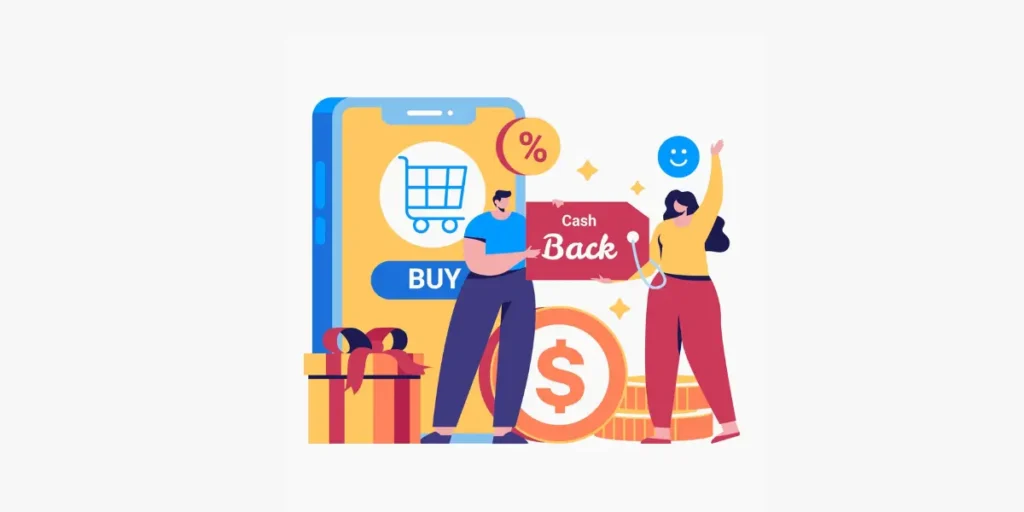
Now that you’re convinced of the potential of QR Codes for loyalty programs, let’s delve into the practical steps to bring it to life for your business. Here’s a comprehensive roadmap to guide you through the implementation process:
Step 1: Setting up the system
A robust foundation is crucial for a thriving loyalty program. Here’s what you need to consider for a smooth setup:
I. Choosing the right QR Code Generator
Selecting the ideal QR Code generator for your loyalty program plays a vital role in ensuring its success.
Here’s a detailed breakdown of key considerations to guide you in making an informed decision:
1. Dynamic QR Codes: Go for a generator that offers dynamic QR Codes. Unlike static codes that hold fixed information, dynamic codes allow you to update the URL or data linked to the code after it’s been generated.
This is crucial for loyalty programs, as you might need to modify the destination (e.g., link to a new rewards page) or track specific customer data associated with the code.
Watch this quick video for a detailed comparison of static and dynamic QR Codes.
Pro Tip: We highly recommend using Scanova’s QR Code generator to create your dynamic QR Codes. Scanova offers dynamic QR Codes that are very easy to use, track, and update.
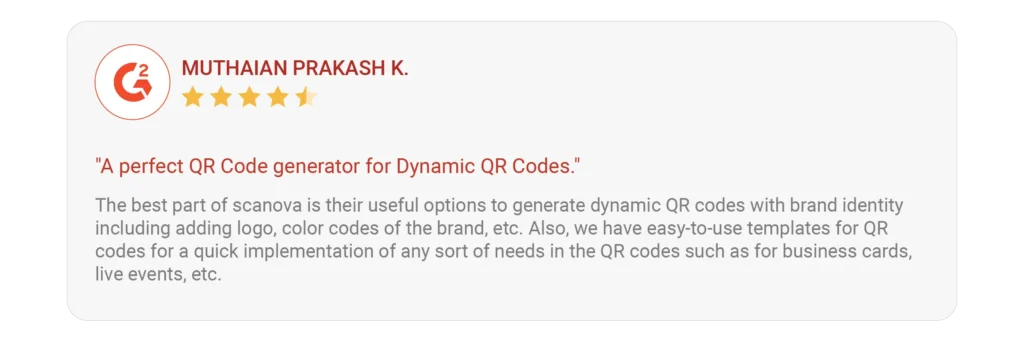
2. Data Tracking and Analytics: Customer insights are the gold mine of loyalty programs.
Choose a generator that provides robust data tracking and analytics capabilities. This allows you to monitor scan activity, understand user demographics, and track customer engagement with your program.
Analyze this data to identify trends, optimize your program based on customer behavior, and personalize rewards to get maximum impact.
3. Bulk Generation: If you require a large number of program members, consider a generator offering bulk QR Code creation.
This saves you time and simplifies the process, especially when managing multiple locations or tiered membership structures.
Pro Tip: We highly recommend using QR Batch, an easy-to-use tool that can help you create many QR Codes within a few seconds.

4. Branding and Customization: Your loyalty program’s visual identity should be consistent. Look for a generator that allows you to customize the design of your QR Codes.
Incorporate your brand colors, logo, or specific design elements to create a visually appealing code that reinforces brand recognition.
II. Additional considerations
5. Security: Since QR Codes can store sensitive customer information, ensure the generator employs robust security measures to protect data.
Look for features like password protection and encryption to safeguard customer privacy.
Look for service providers prioritizing data privacy and adhering to industry-recognized compliance standards like GDPR, SOC 2, and ISO 27001.
These certifications demonstrate a provider’s commitment to robust security practices, offering peace of mind when trusting them with your sensitive data.
Looking for a Secure Option? Scanova, a product of Trycon, sets the bar too high when it comes to privacy. It prioritizes user privacy and adheres to GDPR, SOC 2, and ISO 27001:2022 standards. This can be a secure option for your confidential data-sharing needs.

6. Error Correction: Even minor damage to a QR Code can render it unreadable. Choose a QR Code generator that offers error correction levels.
This adds redundancy to the code, allowing it to function even if it is partially damaged. This guarantees a seamless scanning experience for your customers.
7. Integration is Key: If you already have a point-of-sale system, customer relationship management (CRM) software, or marketing automation tools, ensure your chosen QR Code generation platform integrates seamlessly.
This eliminates data silos, preventing valuable customer information from being scattered across different systems.
Pro Tip: We highly recommend using QR API to integrate QR Code Generation into your information system/mobile app. The best part is that you get the first 20 API requests for free.
Step 2: Designing your QR Codes
Your QR Codes are the access point of your loyalty program QR Code, so it’s crucial to make them visually appealing and functionally sound.
It’s important to strike a balance between looks and functionality. Here’s how you can do it.
1. Branding for Recognition: Infuse your brand identity into the QR Code by adding your brand colors, logo, or even a unique design element.
It makes your brand more recognizable and keeps your loyalty program looking consistent.
2. Functionality for Ease of Use: While aesthetics are important, functionality should never be compromised.
You need to ensure your QR Codes are clear, easily scannable from various distances, and optimized for different sizes and placements.
It is important to use error correction to guarantee readability even if the code is partially damaged. If you have the option, always choose dynamic QR Codes.
These innovative codes allow you to update the destination URL behind the codes without needing to reprint them, offering greater flexibility for future campaigns or promotions.
Step 3: Promoting your program
A successful launch depends on a well-executed promotional strategy. Here are some creative ways to get the word out and generate excitement for your program:
1. Multi-Channel Marketing Strategies: You can use the power of various marketing channels to spread awareness about your program.
Focus on developing engaging social media posts, crafting targeted email campaigns, and utilizing in-store signage, and flyers, or even adding QR Codes into your print advertisements.
These QR Codes can link to a landing page (Here, a dedicated program signup page), streamlining the enrollment process for interested customers.
2. Staff Training: Ensure your staff is well-trained in the program’s benefits and equipped to confidently answer customer inquiries.
Train them on QR Code-related processes, how to assist customers in redeeming rewards, and how to troubleshoot common scanning issues.
An empowered and knowledgeable staff can significantly enhance the customer experience and contribute to the program’s overall success.
By following these steps, you’ll be well on your way to implementing a successful QR Code loyalty program that fosters customer engagement, drives repeat business and fuels your business growth.
If you’ve come this far, then it’s the right time for you to learn the tricks that will help you get the most out of QR Codes. Keep reading!
E. Best practices for loyalty program QR Codes

A well-designed loyalty program QR Code can really help you connect with your customers and keep them coming back.
But to make it work its best, you’ll want to make it easy to use, keep their information safe, and always be looking for ways to make it even better!
1. Prioritize a seamless and inclusive user experience
The key to a great program is making it a breeze to use. Here’s how to keep it simple:
Streamlined Enrollment: Make program enrollment a breeze by offering multiple enrollment options.
Include a QR Code displayed in-store, a sign-up through a mobile app, or join via a dedicated program website.
Keep the signup process short and require only essential information.
Clear Instructions: Provide clear and concise instructions near the QR Code itself, guiding users to scan and join the QR Code loyalty program.
Consider offering a step-by-step visual guide for users unfamiliar with QR Code technology.
Intuitive Interface: Whether users access the program through a mobile app or a web platform, ensure the interface is user-friendly and easy to navigate.
Essential features like point tracking, reward redemption options, and program FAQs should be readily accessible.
2. Cater to a diverse user base
Inclusivity is key. Here’s how you can ensure your program caters to a broad range of users:
Offer Alternative Enrollment Options: While QR Codes are convenient, consider offering alternative enrollment methods for users who might not have smartphones or prefer other methods.
This could include enrollment through a designated email address or a toll-free phone number.
Accessible Design: If utilizing a mobile app or program website, ensure the design adheres to accessibility best practices.
This includes text-to-speech functionality, proper color contrast, and compatibility with assistive technology tools.
3. Build trust and maintain data privacy standards
Customer data is a valuable asset. Here’s how to ensure its protection:
I. Ensuring Customer Data Protection:
Transparency is Paramount: Be transparent about the data you collect, how it is used, and with whom it might be shared (if applicable).
Provide a clear and easily accessible privacy policy that outlines these details.
Strong Security Measures: Implement robust security protocols to safeguard customer data.
This includes encryption of sensitive information, regular security audits, and adherence to industry best practices for data protection.
II. Compliance with Regulations:
Stay Informed: Familiarize yourself with relevant data privacy regulations in your region.
This could include GDPR (General Data Protection Regulation) in Europe or ISO 27001:2022 (International Organization for Standardization) Certification.
Ensure your program adheres to these regulations and provides customers with the necessary controls over their data.
Pro Tip: You control what information you share through QR Codes. By following these tips and practicing caution, you can leverage the convenience of QR Codes without compromising your security.
4. Keep your program dynamic and engaging
A successful program evolves with its users. Here’s how you can prioritize continuous improvement:
I. Gathering feedback
Actively Seek Customer Input: Regularly solicit customer feedback through surveys, polls, or in-app feedback mechanisms.
This feedback will help you identify areas for improvement and tailor the program to meet their needs and preferences better.
Monitor Program Performance: Track key metrics like program enrollment rates, customer engagement levels, and reward redemption patterns. Analyze this data to identify trends and areas for optimization.
You can perform A/B Testing on your QR Codes to see which ones perform better and which geographical locations pulled the most scans/engagements.
II. Adapting to customer needs
Introduce New Features: Keep your program fresh by periodically introducing new features or reward options.
This could include tiered reward structures, gamification elements, or personalized offers based on customer behavior.
Stay Agile: Be willing to adapt your program based on customer feedback and market trends.
Don’t be afraid to experiment and refine your approach to maximize customer engagement and program success.
By following these QR Code best practices, you can get the most out of your campaigns. Now, let’s see some fascinating real-world examples of QR Code loyalty programs.
F. Case studies: seeing loyalty program QR Codes in action
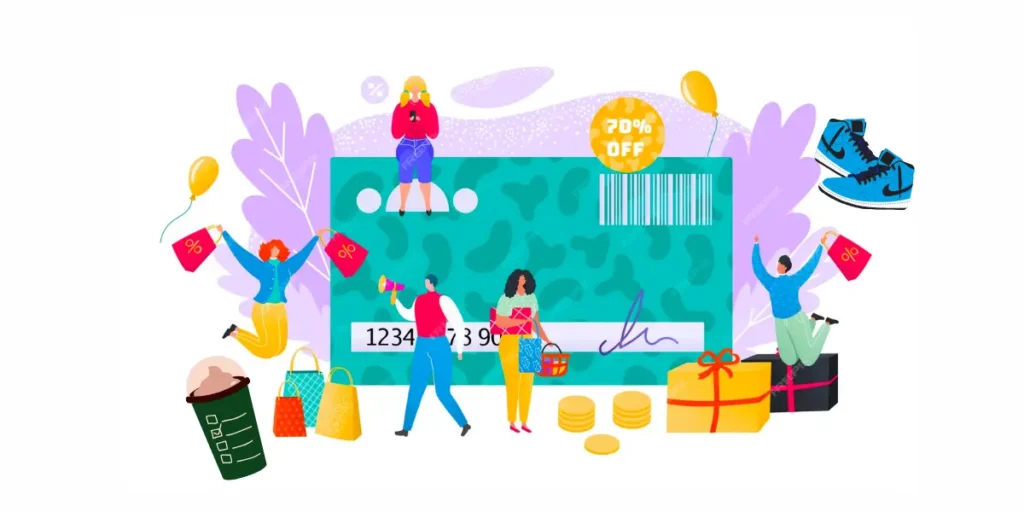
1. Real-world examples of loyalty program QR Codes
Loyalty program QR Codes are making waves across various industries. Let’s take a look at how some businesses are leveraging this technology to create engaging experiences and build stronger customer relationships.
I. Case Study: Sephora Beauty Insider
Sephora is one of the world’s top beauty merchants, with over 2,600 outlets in 34 countries.
The firm has a robust online presence, including a website, a mobile app, and a social media strategy that reaches millions of followers.
Sephora also boasts a devoted consumer base, with over 25 million members in its Beauty Insider program, which provides prizes, discounts, and other special benefits.
This popular beauty retailer displayed QR Codes on product packaging and in-store signage. Scanning the code unlocks detailed product information, customer reviews, and tutorials.
Additionally, Sephora Beauty Insider members can earn points for purchases, access exclusive offers, and redeem points for rewards through a QR Code-linked mobile app.
Mobile is the ultimate bridge between physical and virtual Sephora experiences. Clients will be able to access the breadth of product information available on our site while standing in-store.
Bridget Dolan, Vice President, Interactive Media, Sephora, San Francisco
How does Sephora use QR Codes?
- Sephora has integrated QR Codes to provide virtual try-on experiences for cosmetics, allowing shoppers to sample goods digitally.
- They also use QR Codes to retrieve product information, such as ingredients, usage instructions, and customer feedback.
- Sephora uses QR Codes to provide special information, tutorials, and beauty tips, improving client interaction.
- Sephora also uses QR Codes in its loyalty programs, delivering awards and targeted discounts as incentives for repeat purchases.
What are the benefits of Sephora’s QR Code strategy?
- Increased consumer involvement
- Simpler shopping experiences
- Access to complete product information
II. Case Study: Starbucks Rewards
While not solely reliant on QR Codes, Starbucks offers a robust loyalty program that seamlessly integrates QR Code technology.
Customers can link their Starbucks Rewards account to the mobile app and use it to scan a QR Code displayed at checkout to pay for their purchases and earn Stars (reward points).
Scanning the code grants customers access to a mobile app to track their coffee purchases, unlock free drink rewards, and receive birthday offers.
This program fosters brand loyalty and incentivizes repeat visits. This program streamlines the payment process and incentivizes repeat visits.
III. Case Study: Nike QR Codes
Nike’s use of QR Codes is an excellent example of how this technology may be used efficiently.
Nike’s QR Codes provide clients with access to product details, special content, and a smooth mobile buying experience.
Nike’s method not only enhances customer interaction and brand awareness but also provides vital data for focused marketing efforts.
How does Nike use QR Codes?
- Nike uses QR Codes in a variety of ways, including in marketing efforts to link to unique content or incentives.
- Their items also include QR Codes that direct users to full product information and customer reviews.
- QR Codes boost in-store experiences by providing alternatives such as treasure hunts and interactive displays.
- QR Codes are also utilized in loyalty programs to encourage customer engagement through prizes and personalized experiences.
What are the advantages of Nike’s QR Code strategy?
- Nike’s QR Code strategy provides various benefits, including increased customer involvement, tailored content, and frictionless buying experiences.
- Nike uses QR Codes in their marketing to give customers fast access to product details, reviews, and special content, which fosters brand loyalty and drives sales.
IV. Case Study: Hilton Honors
Hilton Honors is the loyalty program of Hilton Hotels, which covers more than 6,800 properties across 122 countries.
This global hotel chain leverages QR Codes strategically placed throughout its properties.
Guests can scan these codes to access digital amenities like digital room keys, mobile check-in/out options, restaurant menus, and local attraction guides.
This integration enhances the guest experience by providing convenient access to information and services directly on their smartphones.
V. Case Study: Marriott Bonvoy:
Similar to Hilton Honors, Marriott Bonvoy utilizes QR Codes to streamline guest experiences.
Scanning a code allows guests to access digital room keys, explore hotel amenities, order room service, and connect with guest services – all from their mobile devices.
This program fosters convenience and eliminates the need for physical key cards or printed materials.


2. Lessons learned: valuable insights from industry leaders
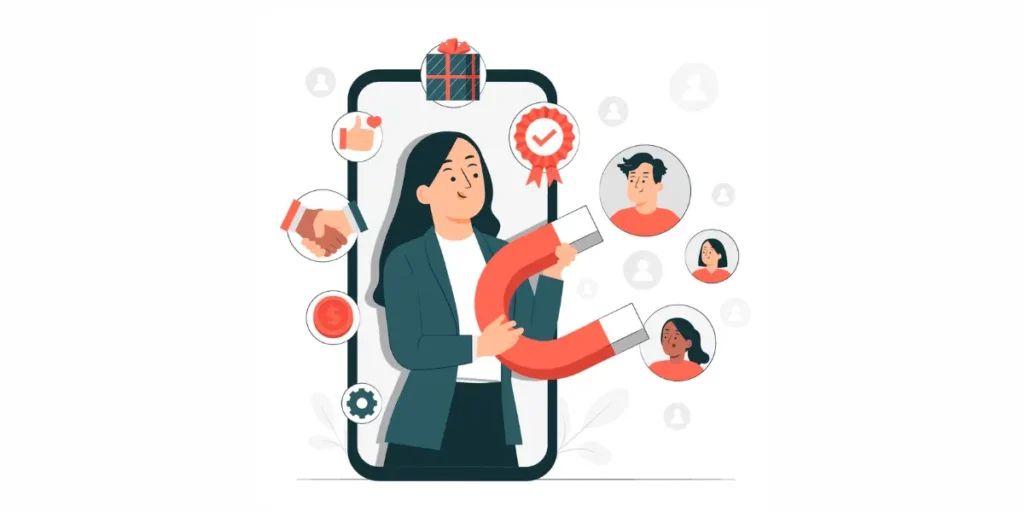
So you have already read numerous case studies but the important part is that you can gain valuable insights that can guide your program development. Here are some key takeaways:
- Focus on Value: Offer rewards that resonate with your target audience. Whether it’s exclusive discounts, personalized experiences, or convenient access to information, tailor your program to provide real value to your customers.
- Seamless Integration: Integrate your QR Code program with your existing systems to create a smooth user experience. This could involve linking points earned to your point-of-sale system or offering reward redemption options within your mobile app.
G. Challenges and solutions: Overcoming hurdles for program success
1. Common pitfalls
While loyalty program QR Codes offer a wealth of benefits, there are also potential challenges to consider. Here are two common pitfalls to be aware of:
I. Technical issues
- QR Code Quality: Ensure your QR Codes are high-resolution and scannable from a comfortable distance. Test them across different devices and lighting conditions.
- Platform Integration: Choose a platform that seamlessly integrates with your existing systems to avoid technical glitches or data silos.
II. Customer adoption
- Program Awareness: Develop a comprehensive marketing strategy to create awareness about your program and its benefits. You can use social media, in-store signage, and email campaigns to reach your target audience.
- Value Proposition: Communicate the value proposition of your program. Highlight how customers can benefit from participating and motivate them to join.
2. Overcoming barriers: strategies for loyalty program
I. Effective Troubleshooting:
Dedicated Support: Establish a dedicated support channel for customers who encounter technical difficulties with scanning QR Codes or navigating the program platform.
This could be a customer service email address, a phone hotline, or a live chat feature within the mobile app.
Pro Tip: Scanova offers robust customer support right when you need it. It is so on point that they solve your queries even on weekends.
Clear Instructions: Provide clear and concise instructions near the QR Code, guiding users to scan and join the program.
Consider offering a step-by-step walkthrough for users unfamiliar with QR Code technology.
II. Encouraging customer participation
Gamification: Incorporate gamification elements into your program, such as reward points for completing actions, leaderboards, or badge systems.
This can increase user engagement and motivate participation.
Did you know? According to Snipp, brands that incorporate gamification into their customer engagement strategies saw a 47% rise in engagement, 22% in brand loyalty, and 15% in brand awareness. The same study also found that more than two-thirds of the world’s top 2,000 companies have already embraced gamification. Source: themanifest
Personalized Offers: Leverage customer data to deliver targeted promotions and reward options.
This personalization can make your program feel more relevant and valuable to individual customers.
By acknowledging potential challenges and proactively implementing solutions, you can ensure your loyalty program QR Code thrives and fosters lasting customer relationships.
H. FAQs: Create loyalty program QR Codes

1. What is a loyalty program QR Code?
A QR Code loyalty program is a digital rewards system that uses QR Codes to track and incentivize customer behavior.
Customers scan these codes with their smartphones to unlock rewards, points, or discounts. This fosters customer loyalty and drives repeat business.
2. How do QR Codes for loyalty programs work?
There are two main ways QR Codes are used in loyalty programs:
- Enrollment & Tracking: Customers scan a QR Code to sign up for the program, link their account, or earn points for purchases.
- Redemption: Customers scan a QR Code displayed at checkout or in the app to redeem their points for rewards.
3. What are the benefits of using QR Codes for loyalty programs?
- Convenience: QR Codes are easy for customers to scan with their smartphones, making program participation effortless.
- Increased Engagement: QR Codes can be used for gamified elements or special offers, encouraging customer interaction.
- Data Collection: Scanning QR Codes allows businesses to collect valuable customer data to personalize rewards and marketing.
- Cost-Effective: QR Codes are a relatively inexpensive way to implement and manage a loyalty program.
4. What are some examples of how QR Codes are used in loyalty programs?
- Restaurant: Scan a QR Code on your receipt to earn points for a meal.
- Retail Store: Scan a QR Code on a product to get early access to sales or exclusive discounts.
- Coffee Shop: Scan a QR Code to redeem points for a free drink.
5. How can I create loyalty program QR Code for my business?
Several online platforms like Scanova can help you create and manage a QR Code loyalty program.
These platforms offer features like QR Code generation, customer tracking, and reward management.
Read more here: Best QR Code Generators of 2024
